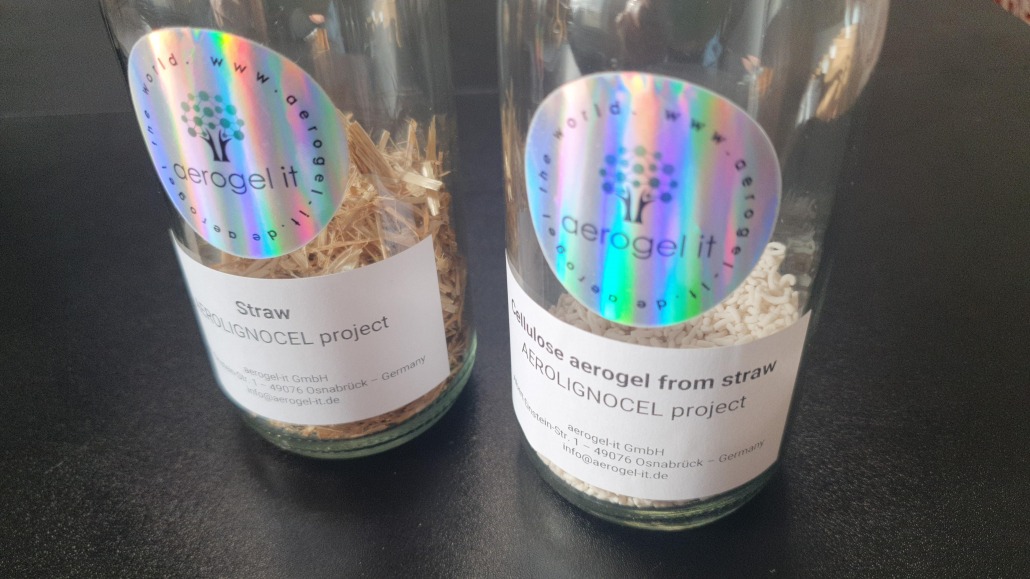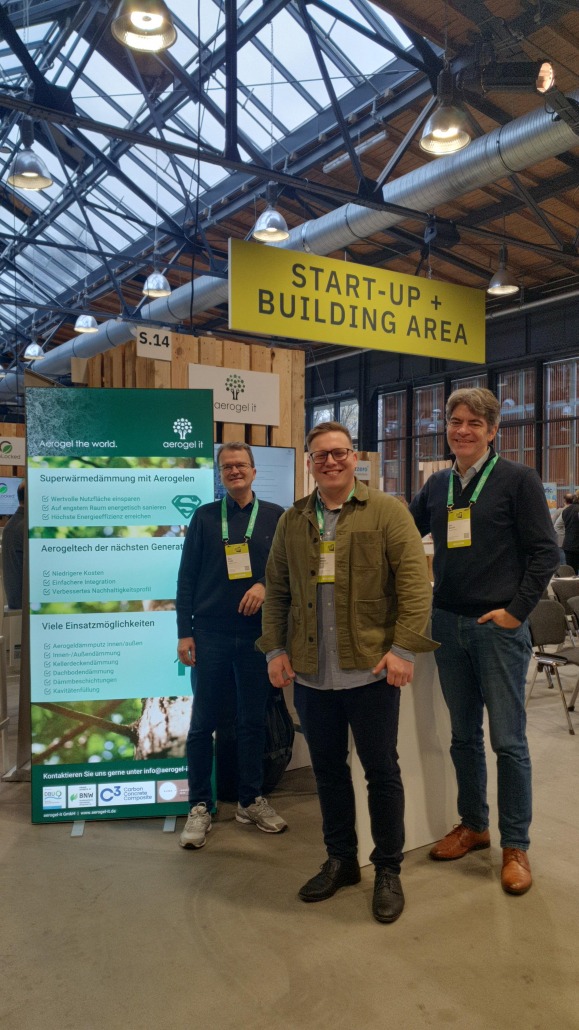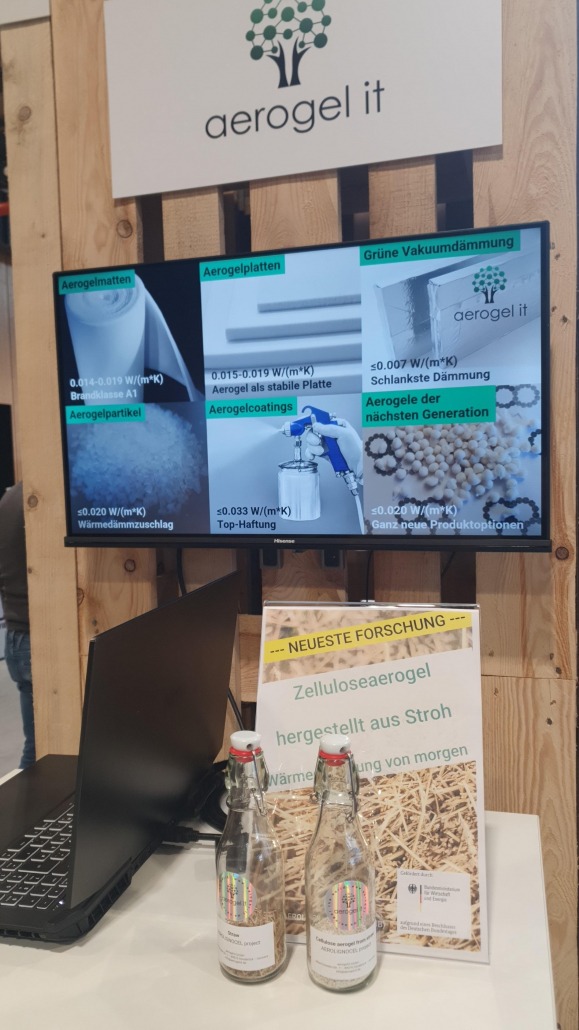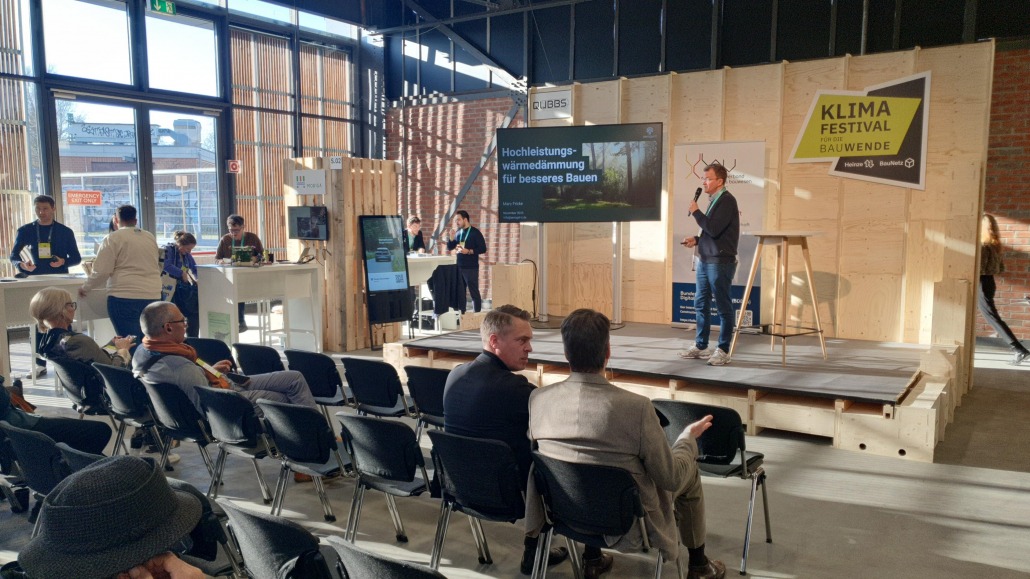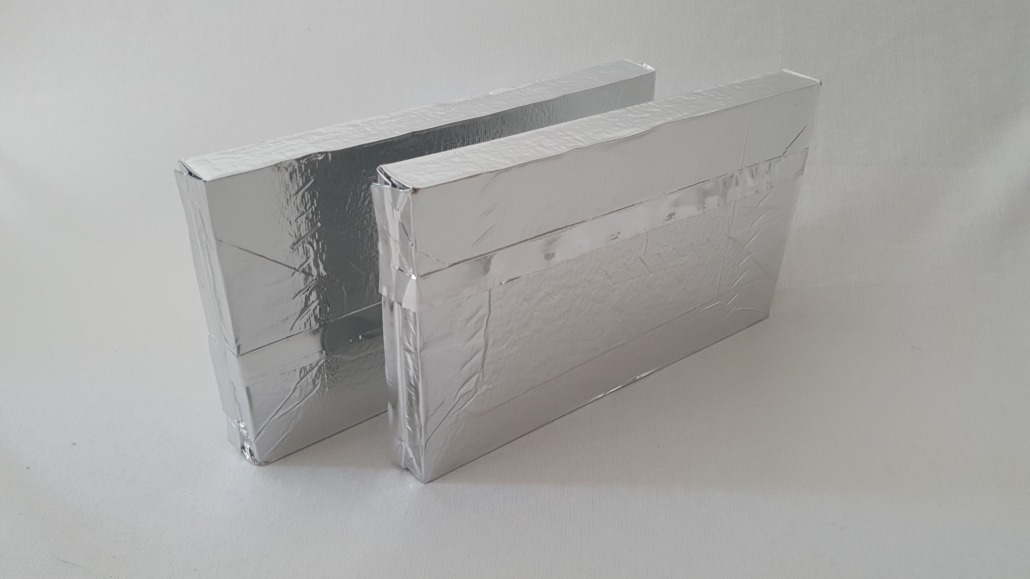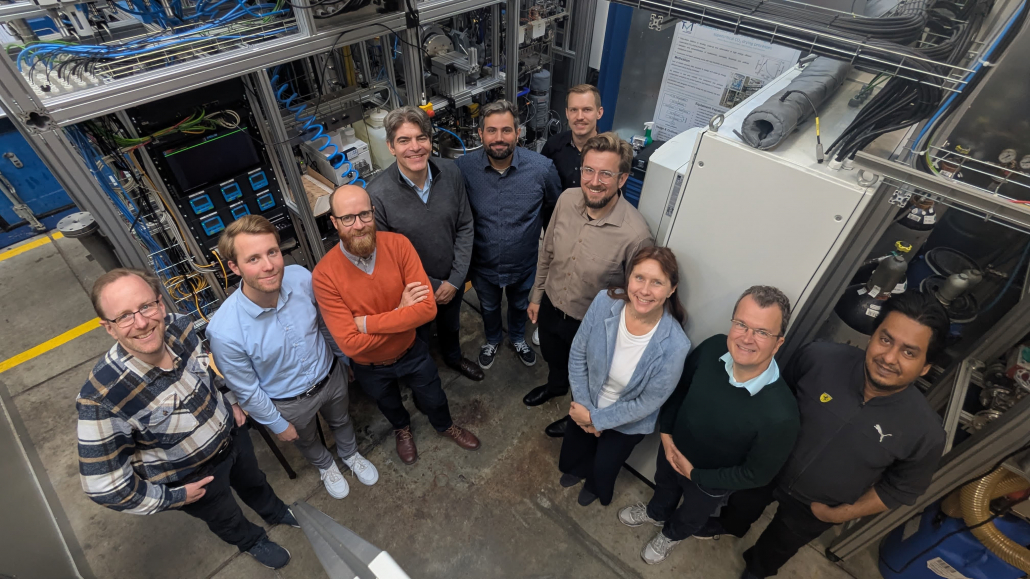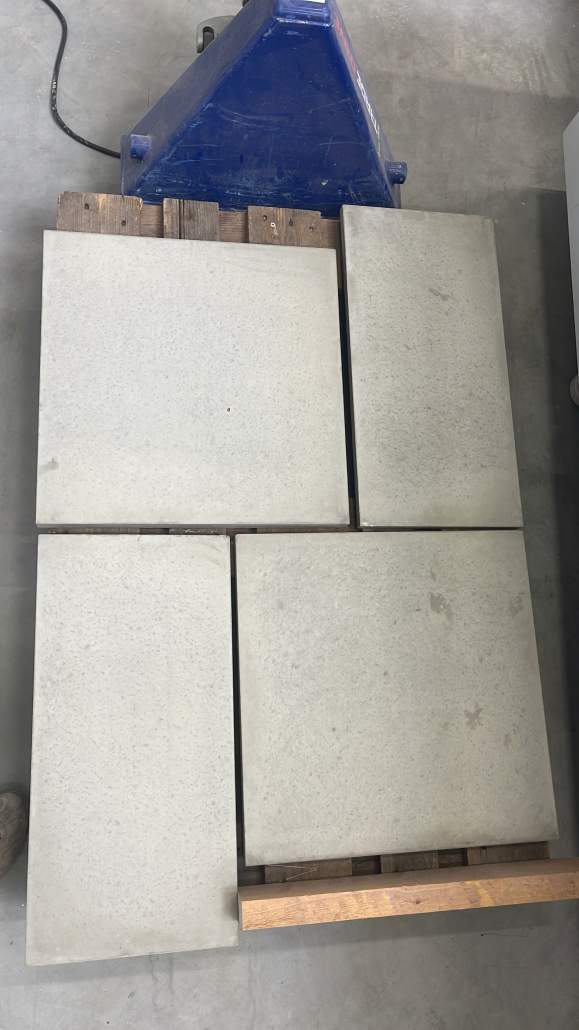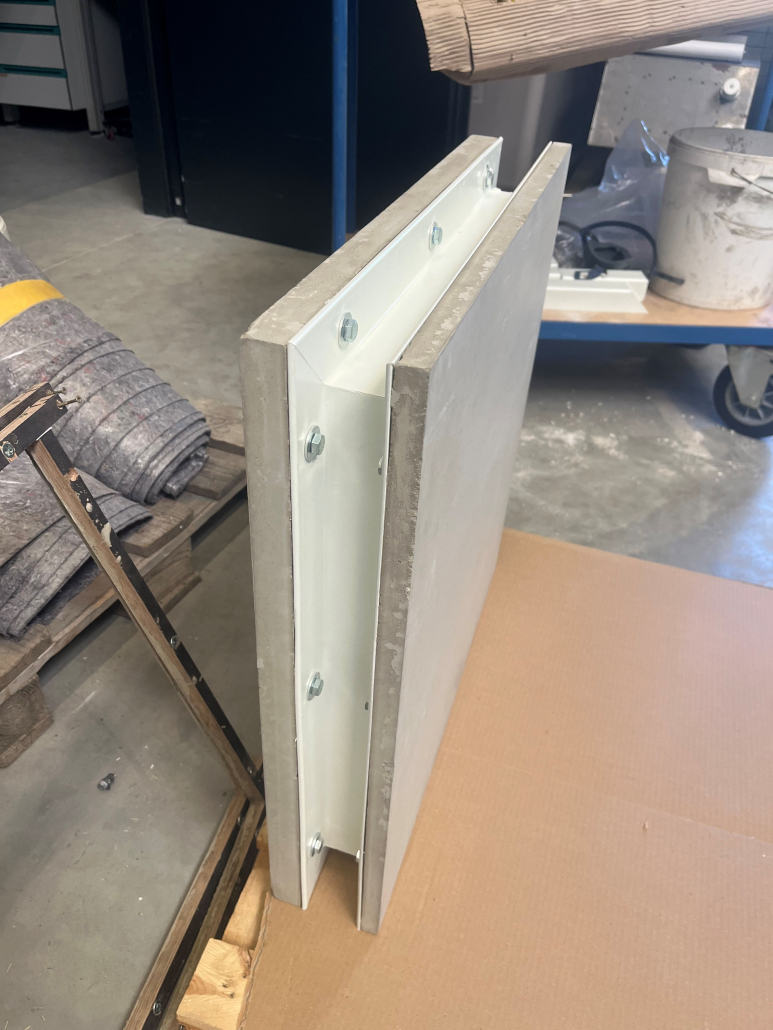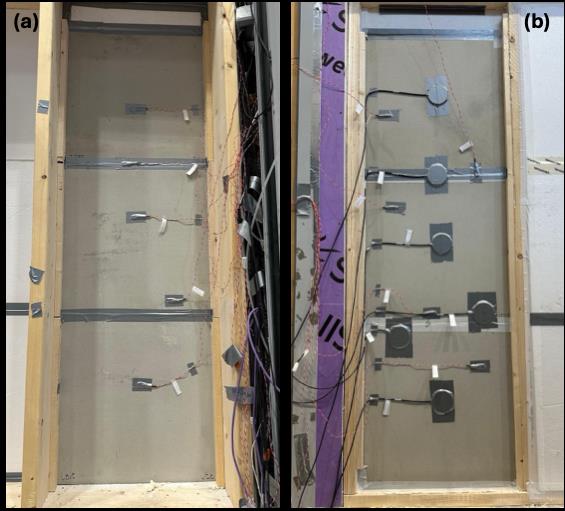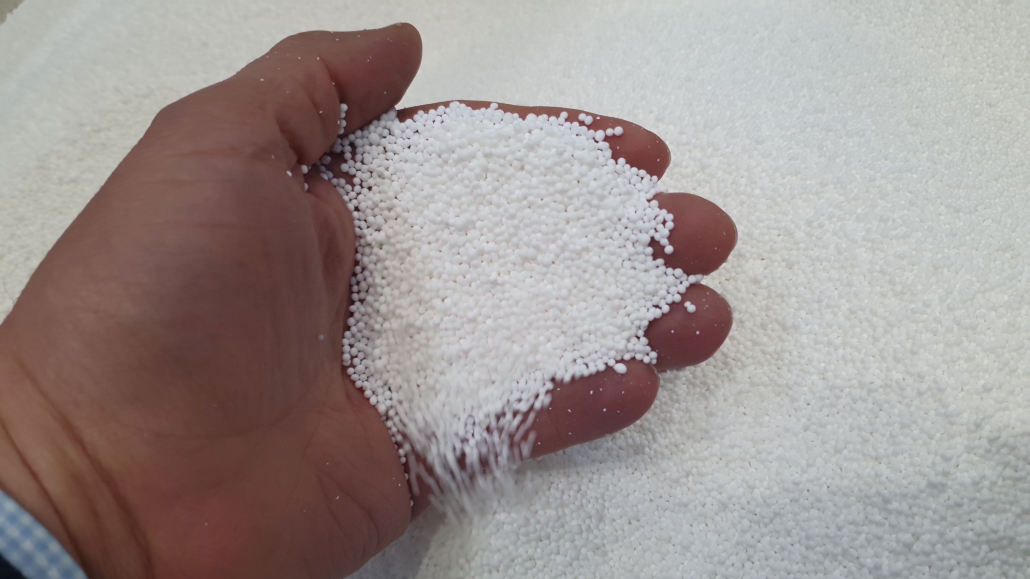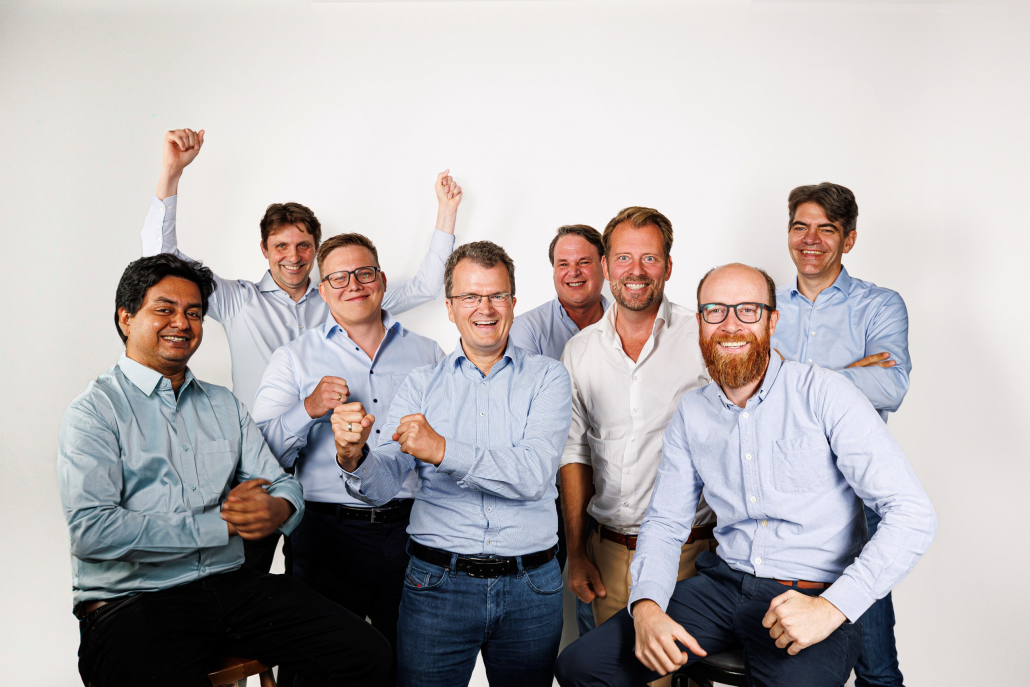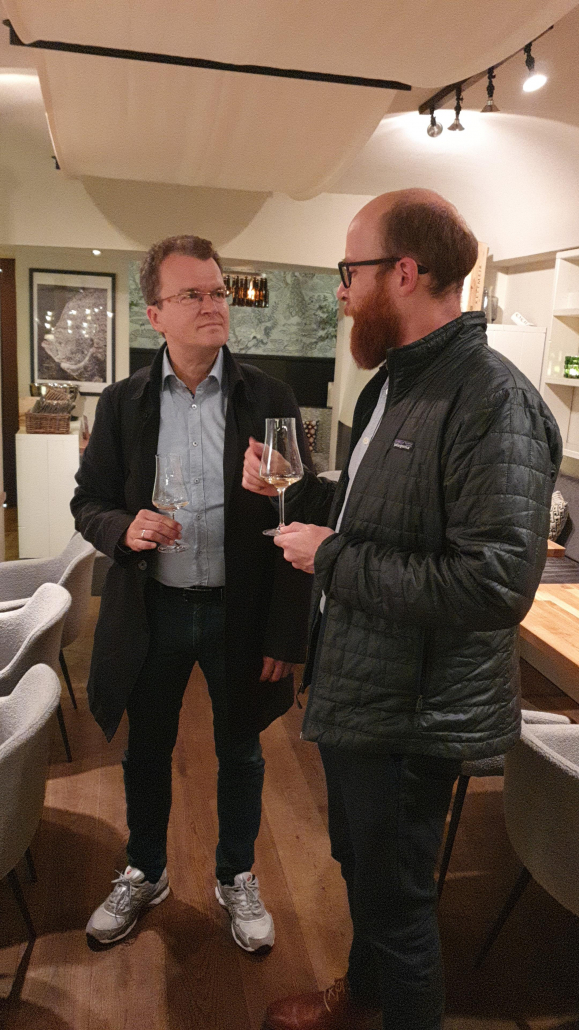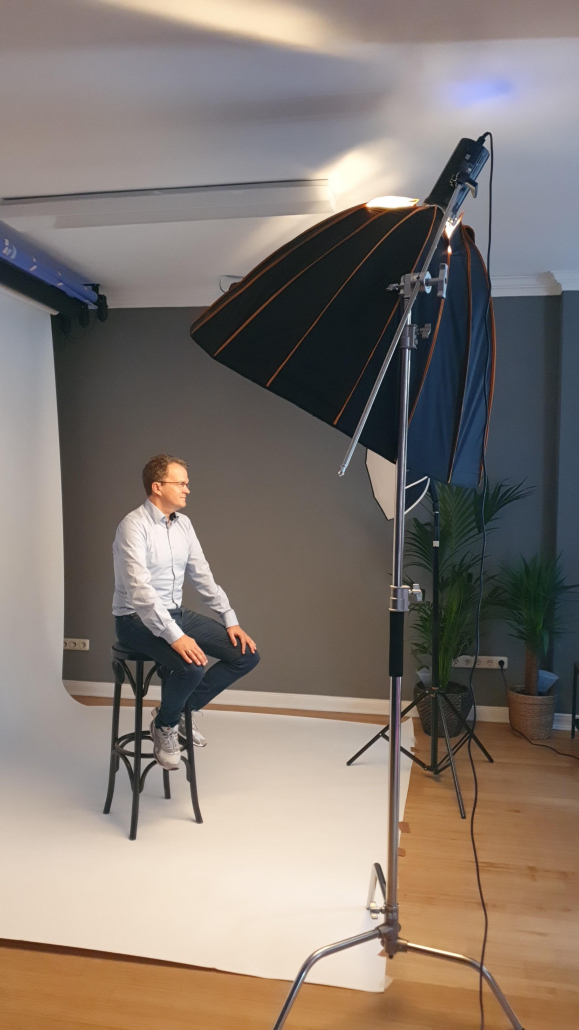Last week, Eduard, Marc and Dirk presented aerogel-it at the Heinze Klimafestival 2025, a fair for sustainable construction in Berlin.
It has been the third time for the aerogel-it team to attend this fair. As in the previous years, the fair was truly excellent with lots of interesting exhibits and visitors. Bio-based products such as plant-based panels as well as recycling were highly visible topics.
And it was far from boring or quiet – Marc and colleagues were overwhelmed by the strong interest and many discussions on aerogel materials. For two days, the team was in conversations practically continuously – a good indicator for a successful fair!
aerogel-it could present a wide range of aerogel products for new construction and energetic renovation – aerogel granules, blankets, coatings and boards. Energetic renovation was by far the more dominant topic over new construction.
Plus, we were particularly proud to present the first cellulose aerogel directly prepared from straw! We are expecting lots of advantages for our aerogel platform technology from this backwards integration approach.
This work is part of a public funded R&D project, where we investigate the development and application of biomass-based aerogels together with our partners Kahnt & Tietze GmbH, va-Q-tec Thermal Solutions GmbH und Hamburg University of Technology. The project is funded by the Federal Ministry for Economic Affairs and Energy. We are seeing lots of exciting results already and are eager to share them with you a bit further down the line – stay tuned!
